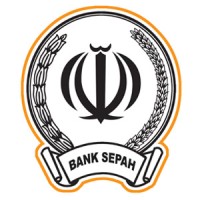
Bank Sepah (بانک سپه , Sepah Bank)
Get verified emails for Bank Sepah (بانک سپه , Sepah Bank) employees

About Bank Sepah (بانک سپه , Sepah Bank)

|
|

|
201-500 employees
View all

|

|
Banking
|

|
Imam Khomeini Square,Tehran,Tehran,IR
|

|
As the first established Iranian bank, Bank Sepah started its operations on May 4, 1925. The Bank Articles of Association were fundamentally revised in 1926, thus enabling it to render financial and banking services for economic activities.
Now, as one of the most influential Iranian financial institutions, Bank Sepah with 94 years of experience effectively contributes to achievement of the country’s macroeconomic goals through mobilizing the funds from depositors and allocating them to the productive sectors. With a paid-up capital of IRR 119,531,843 million, the Bank now is one of the six Iranian state banks (wholly owned by the Government of I.R. of Iran) which plays a significant role in the economic development of Iran, through providing services on both national and international bases, within the framework of its three-year Strategic Plan, taking full advantage of its 1766 domestic branches, the three overseas branches in Paris, Rome and Frankfurt and one wholly-owned subsidiary, Bank Sepah International plc, in London.
|
Bank Sepah (بانک سپه , Sepah Bank) Email Format
The widely used Bank Sepah (بانک سپه , Sepah Bank) email format is {f}{last}@banksepah.ir (e.g. [email protected]), which is used 75.00% of the time.
| Bank Sepah (بانک سپه , Sepah Bank) Email Formats | Example Email Formats | Percentage |
|---|---|---|
| {f}{last} | [email protected] |
75.00%
|
Frequently Asked Questions about Bank Sepah (بانک سپه , Sepah Bank)
What is Bank Sepah (بانک سپه , Sepah Bank) email format?
The widely used Bank Sepah (بانک سپه , Sepah Bank) email format is {f}{last} (e.g. [email protected]) with 75.00% adoption across the company.
What is Bank Sepah (بانک سپه , Sepah Bank) customer service number?
To contact Bank Sepah (بانک سپه , Sepah Bank) customer service number in your country click here to find.
Bank Sepah (بانک سپه , Sepah Bank) Staff Directory
Search Bank Sepah (بانک سپه , Sepah Bank) Staff Directory
Find accurate personal emails, work emails and phone numbers for employees
Supercharge your
Prospecting &
Outreach with
ContactOut
Supercharge your Prospecting &
Outreach with ContactOut
Search Portal
Find countless prospects outside of LinkedIn fast
Accelerate prospecting with instant access to 300M professionals from 30M companies with the right contact details.

















